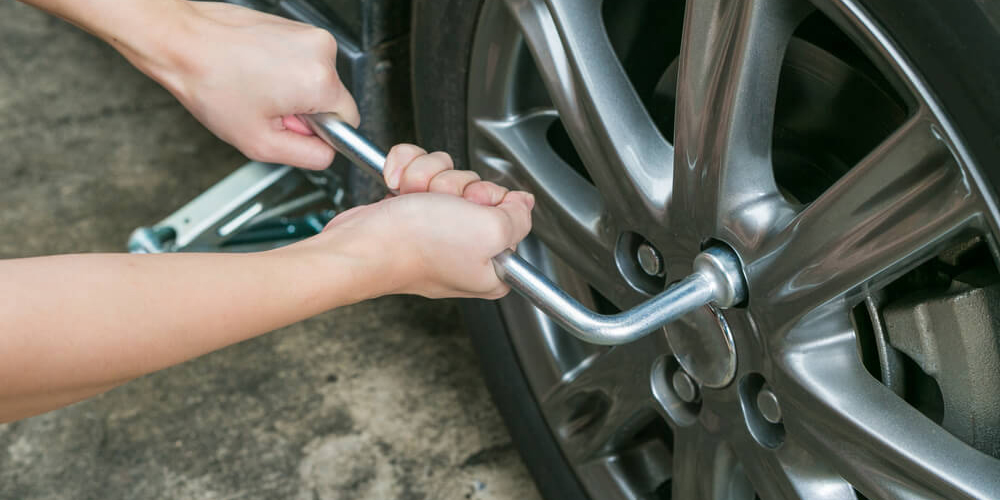
Changing a tire is an essential skill that every driver should be familiar with. Nearly all drivers will experience a flat tire at least once. Knowing how to handle this unfortunate situation can ease the stress and headache of an interrupted commute.
Preparation is important. Steps should be taken to ensure your safety and the safety of other motorists before beginning the process of changing out a flat tire for a spare. If possible, slowly make your way to a safe area off of the main roadway and park your vehicle. This area should be wide enough for you to move around your vehicle, giving you plenty of room between your vehicle and passing motorists. Ideally you'll be in a parking lot, but a wide highway shoulder can do in a pinch. Ensure emergency flashers are activated to warn other drivers. Taking every precaution to make sure people notice can significantly increase your safety and the safety of others. Always apply the emergency brake before attempting to change your tire. Blocking at least one wheel with a rock or wheel block (also called a chock) is an extra safety precaution that can prevent your vehicle from moving during this procedure. If you have any secondary warning devices such as a reflective warning sign or flare, place it several feet behind your car for an additional layer of safety.
How To Change Tires
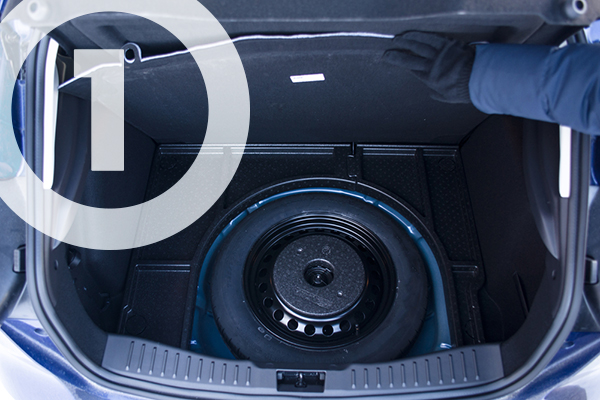
1. First, locate your spare tire and jack. Usually these will be in close proximity to each other in the trunk of your vehicle. Trucks often have the spare tire mounted to the underside of the vehicle and the jack in a compartment in the cab. Carefully remove the spare tire and place it on the ground close to the flat that you are going to be replacing. Most jacks have a built-in lug wrench, remove it and use it to loosen and remove the hub cap (if the wheel has one) on the wheel with the flat tire. Set the hub cap to the side.
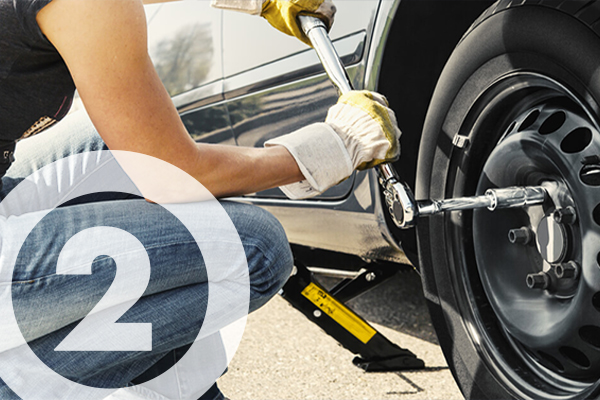
2. After removing the hub cap (if applicable), use the lug wrench to loosen the lug nuts on the wheel with the flat tire. Be sure to do this before using the jack to lift the wheel off the ground. Lug nuts are installed very tightly, and the vehicle may rock or shift while removing them. It is very important that the jack is not engaged until after this procedure. Place the lug wrench onto each nut and apply pressure to the handle to unscrew each nut (counter clockwise). Only loosen the nuts, do not remove them yet. If you have trouble loosening a lug nut, you can use your foot or knee to provide additional force to the lug wrench.
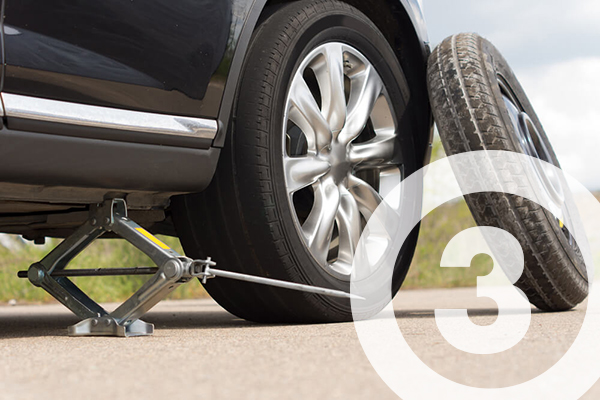
3. Next, position the jack on a structural part of your vehicle's frame. Your vehicle owner's manual will provide specific information about proper placement of the jack for your vehicle. Turn the jack mechanism clockwise by hand until it meets the vehicle frame, then use the jack's handle to continue to raise the jack. Often, the lug wrench doubles as the jack's handle. Raise the jack until the damaged tire is several inches above the ground.
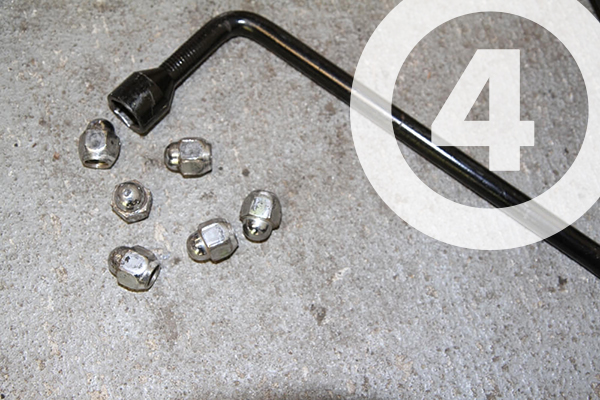
4. Once the vehicle is lifted off the ground, remove the lug nuts that you previously loosened. Make sure to keep your lug nuts in a safe location so that you don't lose them (the hub cap makes an excellent parts tray). Carefully remove the flat tire (be careful not to hurt yourself, wheels and tires can be quite heavy), and place it in an area away from the road. Install your spare tire onto the wheel, aligning the bolt holes with the bolts. Replace the lug nuts and tighten them by hand. Use the lug wrench to secure the nuts (only enough that the spare tire no longer wobbles on the bolts).
5. Finally, you can lower the jack to place the vehicle back on the ground. Remove the jack once it can move freely. Use the lug wrench to fully tighten down the lug nuts. Do not tighten the nuts in clockwise/counter-clockwise sequence. Instead tighten one, then tighten the nut opposite, then another opposite, etc (like drawing a star). After the lug nuts are fully tightened, place all of your tools and the flat tire back into your vehicle and navigate to the nearest tire service facility (your spare tire is a short term solution, and is not designed for longer trips or highway speeds).